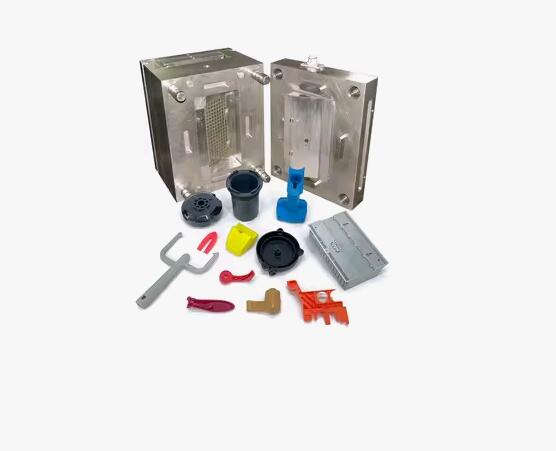We are committed to providing customers with high-quality, precision mold solutions.
Toolbox Molds
Cat:Toolbox And Accessories Mold
Toolbox molds encompass a variety of types designed to produce different styles and sizes of toolbox...
See Details
The world of toys is as diverse as the children who play with them. One of the key components in the production of these delightful playthings is the plastic toy mold. A plastic toy mold is a precision tool used in the manufacturing process to create toys in various shapes and sizes. This article delves into the different types of plastic toy molds and the materials that are commonly used in their creation. By understanding these aspects, toy manufacturers and enthusiasts can gain insights into the complexities and possibilities of toy production.

Types of Plastic Toy Molds:
1. Single-Cavity Molds: These are the simplest type of plastic toy molds, where only one toy is produced per injection cycle. They are cost-effective and ideal for small-scale production or when a single design is being produced.
2. Multi-Cavity Molds: As the name suggests, multi-cavity molds contain multiple cavities, allowing for the simultaneous production of several toys. This type of plastic toy mold is beneficial for high-volume production, as it increases efficiency and reduces the overall cost per unit.
3. Two-Plate Molds: In a two-plate mold, the mold opens and closes in a horizontal direction. This is a common type of plastic toy mold used for flat or simple-shaped toys that do not require complex ejector systems.
4. Three-Plate Molds: These molds have an additional plate compared to two-plate molds, which allows for the creation of more complex toys with over-molded or insert-molded features. They are essential for plastic toy molds that require intricate designs or multiple materials.
5. Family Molds: A family mold, also known as a multiple cavity family mold, accommodates different toy designs within a single mold. This type of plastic toy mold is used when a manufacturer wants to produce a variety of toys in one production run.
Materials Used in Plastic Toy Molds:
1. Steel: Steel is the common material used in the construction of plastic toy molds due to its durability, strength, and heat resistance. It allows for the creation of high-quality molds that can withstand the pressures and temperatures involved in the injection molding process.
2. Aluminum: Aluminum molds are lighter than steel molds and offer faster cooling times, which can increase production efficiency. However, they are not as durable and are typically used for short production runs or prototypes.
3. Plastic: While less common, plastic molds can be used for very small or low-volume production runs. They are less expensive to produce but have a shorter lifespan and lower heat tolerance compared to metal molds.
4. Hybrid Molds: These molds combine different materials to leverage their individual strengths. For example, a hybrid mold might use steel for the main structure and aluminum for the core to achieve a balance between durability and cooling efficiency.
5. Specialty Alloys: For high-precision or high-wear applications, specialty alloys like H13 or S7 tool steel are used. These materials offer heat resistance and dimensional stability, making them ideal for complex plastic toy molds.
The types of plastic toy molds are as diverse as the toys they produce. Single-cavity molds are good for small-scale or single-design production, while multi-cavity molds are essential for high-volume manufacturing. Two-plate and three-plate molds cater to different toy complexities, and family molds allow for a variety of designs in one mold. In terms of materials, steel remains the industry standard for its durability and heat resistance, with aluminum and plastics finding niche applications. Hybrid molds and specialty alloys are chosen for their unique advantages in specific scenarios.
Expanding on Plastic Toy Molds:
To further understand the intricacies of plastic toy molds, let's explore some additional aspects:
1. Design and Complexity: The design of a plastic toy mold directly influences the complexity and cost of the mold. Simple toys require simpler molds, while complex toys with multiple moving parts or intricate details necessitate more elaborate molds.
2. Production Volume: The anticipated production volume plays a significant role in determining the type of plastic toy mold to be used. For low volumes, simpler molds may be more cost-effective, while high-volume production justifies the investment in more complex molds.
3. Cost Considerations: The cost of a plastic toy mold is influenced by its type, material, and complexity. Steel molds, while more expensive initially, often offer a better return on investment due to their durability and long lifespan.
4. Eco-Friendly Materials: As sustainability becomes increasingly important, there is a growing interest in using eco-friendly materials for plastic toy molds. This includes the use of recycled plastics and the development of biodegradable materials for molds.
Contact Us